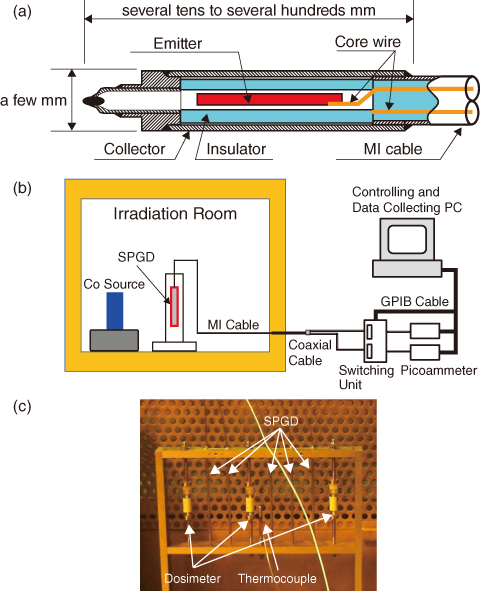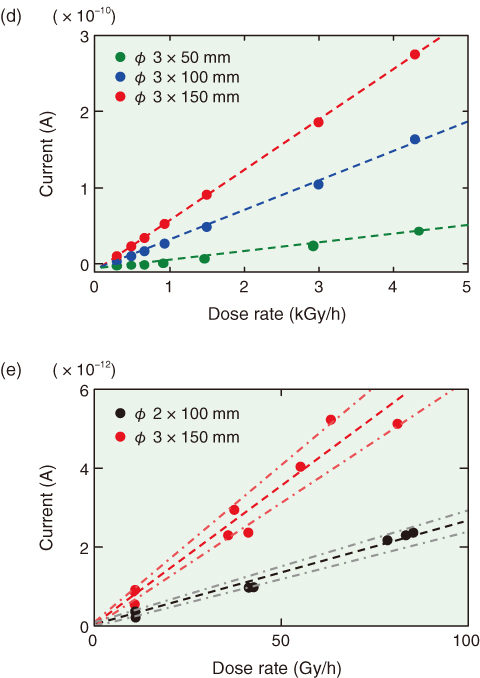
Fig.4-26 Schematic of SPGD and irradiation experiment

Fig.4-27 Output currents of SPGDs with γ-ray-dose rate
The fuel debris must be removed to decommission the TEPCO’s Fukushima Daiichi NPS (1F). However, the high-radiation environment precludes a visual confirmation of the primary containment vessel (PCV) at 1F.
Therefore, we are developing a method to measure radiation that uses a self-powered gamma detector (SPGD) as a means to obtain the distribution of the debris in PCVs. The SPGD does not require a complex structure and an external electric power source because the output current is obtained from electrons generated by γ-rays impinging on the emitter. This means that the SPGD can be only a few millimeters in diameter and can therefore access intricate piping systems (Fig.4-26).
To determine the applicability of the SPGD be to 1F, we fabricated thin SPGDs with lead (Pb) emitters of various lengths and diameters, and investigated their γ-ray detection limits. The relationship between the γ-ray intensity and the output current was obtained in irradiation rooms where the of γ-ray intensity distribution was known. The results indicate that the length of emitter influences the output current more than the diameter.
Until now, the dose rate in the PCV was considered to be up to tens of gray per hour, with the higher-intensity radiation doubtless occurring closer to the core. In a high-dose-rate environment, the output current was linear in dose rate to over 4000 Gy/h (Fig.4-27(d)). In a low-dose-rate environment, above 10 Gy/h, the average discrepancy with respect to the approximate curve (dashed lines) was estimated to be ∼14%, as indicated by dash-dotted lines (Fig.4-27(e)). Thus, the SPGDs used in this study can measure the γ-ray-dose rate with fair accuracy. These results show that the measuring range of the SPGDs corresponds to the intensity of radiation in the PCV of 1F and that the SPGDs may serve as a detector in such an environment.
By leveraging the results of the present study, we plan to further improve the structure of the SPGDs to increase their sensitivity and their ability to interrogate intricate pipe systems.